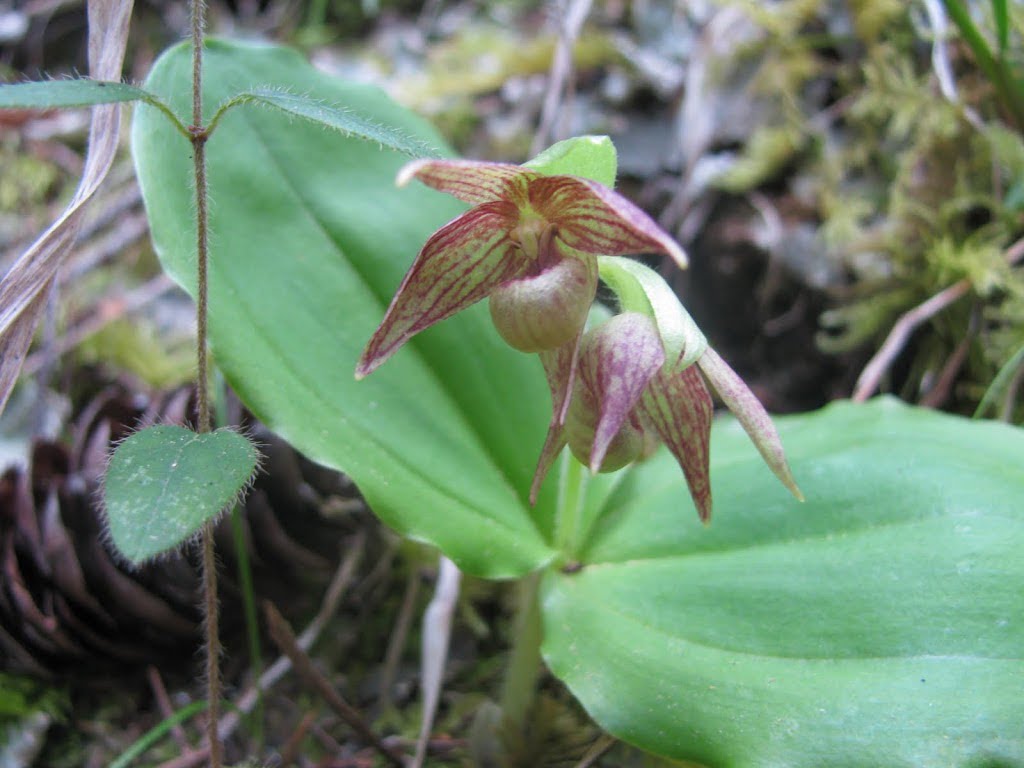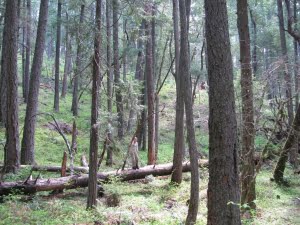
Population Viability Analysis for Cypripedium fasciculatum
Common Name: Clustered lady’s slipper
Scientific Name: Cypripedium fasciculatum Kellogg ex S. Watson; also Cypripedium knightiae A. Nelson
Special Listing Status: Cypripedium fasciculatum is listed as a bureau sensitive species within Oregon and California by the Bureau of Land Management. Within the USDA Forest Service regions five and six it is listed as a sensitive species and was formerly a survey and manage species under the Northwest Forest Plan. It is also a candidate for listing by the state of Oregon.
Distribution: This rare orchid is found in isolated populations from north central Washington south through Oregon to central California and extends east to the Idaho, Montana, Colorado, Wyoming and Utah mountains. In Oregon, the species occurs most frequently in the Klamath Mountains in the southwest corner of the state.
Project Description: We relocated and then documented and described previous sightings of Cypripedium fasciculatum located throughout the Medford District BLM and the Siskiyou National Forest lands. These areas were last surveyed between 1 to 29 years ago and therefore varied in the information available to relocate the populations. This ongoing project began in 2008 while the data for the population viability analysis includes information from monitoring plots established between 1996 and 1998 and monitored through 2007 as well as a selection of populations from the Sierra Nevada bioregion taken from the Carothers (2003) database. The intent of this monitoring is to determine the likelihood of persistence of populations. For example, previous analyses found that of 180 populations, 59% had declined in size, and 33% went extinct. Small populations (fewer than 10 plants) had a 50% chance of going extinct.
Identification Tips: Cypripedium fasciculatum is a small orchid measuring less than 18cm from the base to the apex while the the span of the two sessile, opposite, elliptical leaves can be up to 30cm. The surest identification trait to distinguish C. fasciculatum from similar looking species is the puberulent stem. There is usually a singular miniature bract between the leaves and the flowers which are found in drooping clusters of 2 to 10. The flowers themselves are relatively small for orchid flowers, only reaching 4.5cm from tip to tip, and range in color from brown markings on a green or golden background to predominantly reddish-brown.
Interesting Facts: Additional research is needed to determine the habitat requirements of C. fasciculatum however it has been hypothesized that mid to late-successional forest communities may be favored due to the presence of fungal symbionts. Therefore characteristics of the upper organic soil layer such as soil development, soil depth, rate of decomposition of organic matter, moisture content and pH which affect mycorrhizal fungi may control the distribution of this orchid. Also, this species is capable of dormancy which may explain the inability to relocate small populations due to synchronous dormancy.


